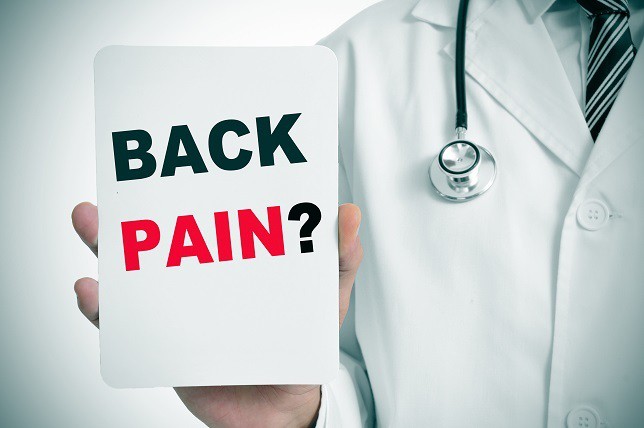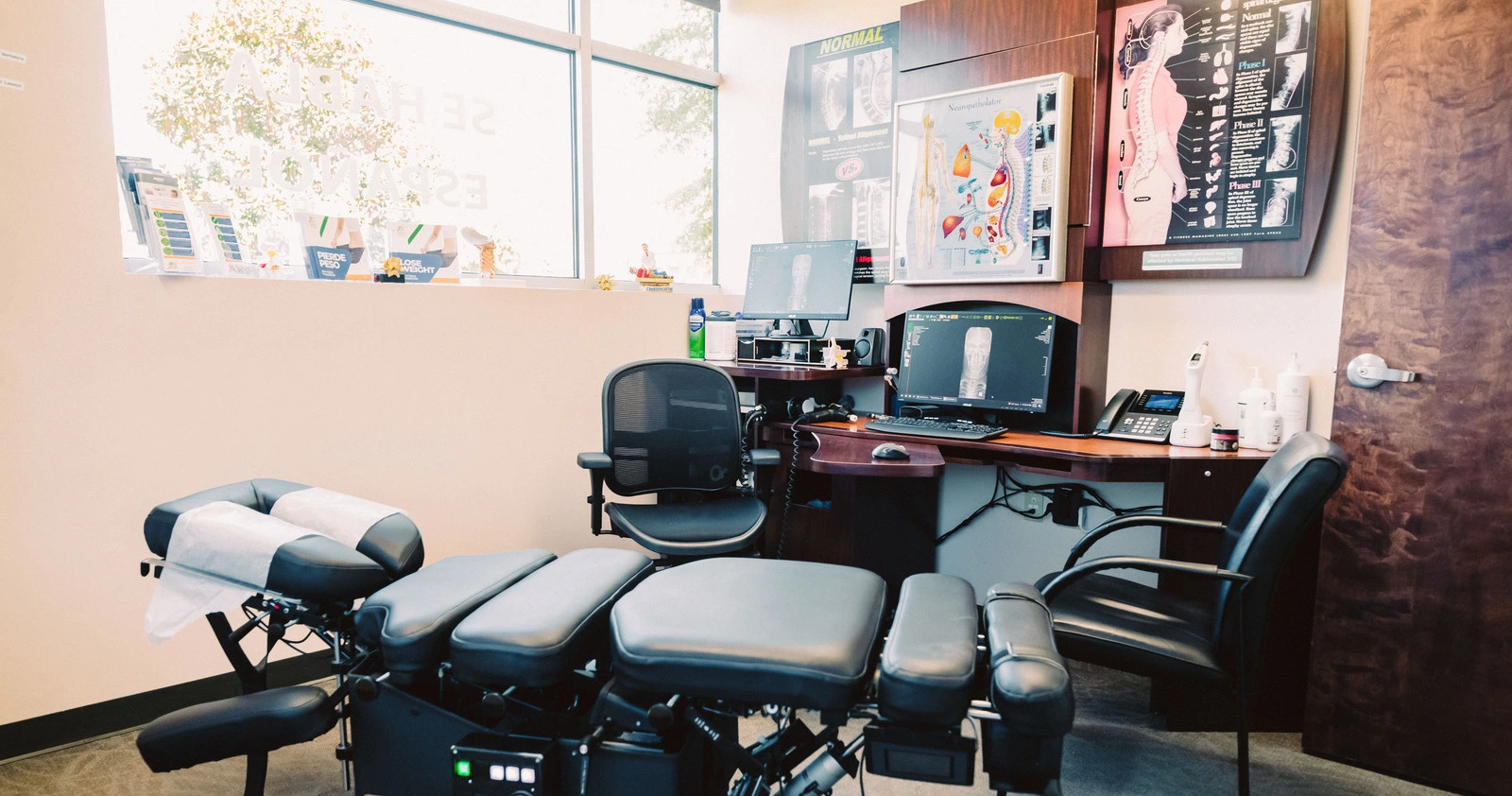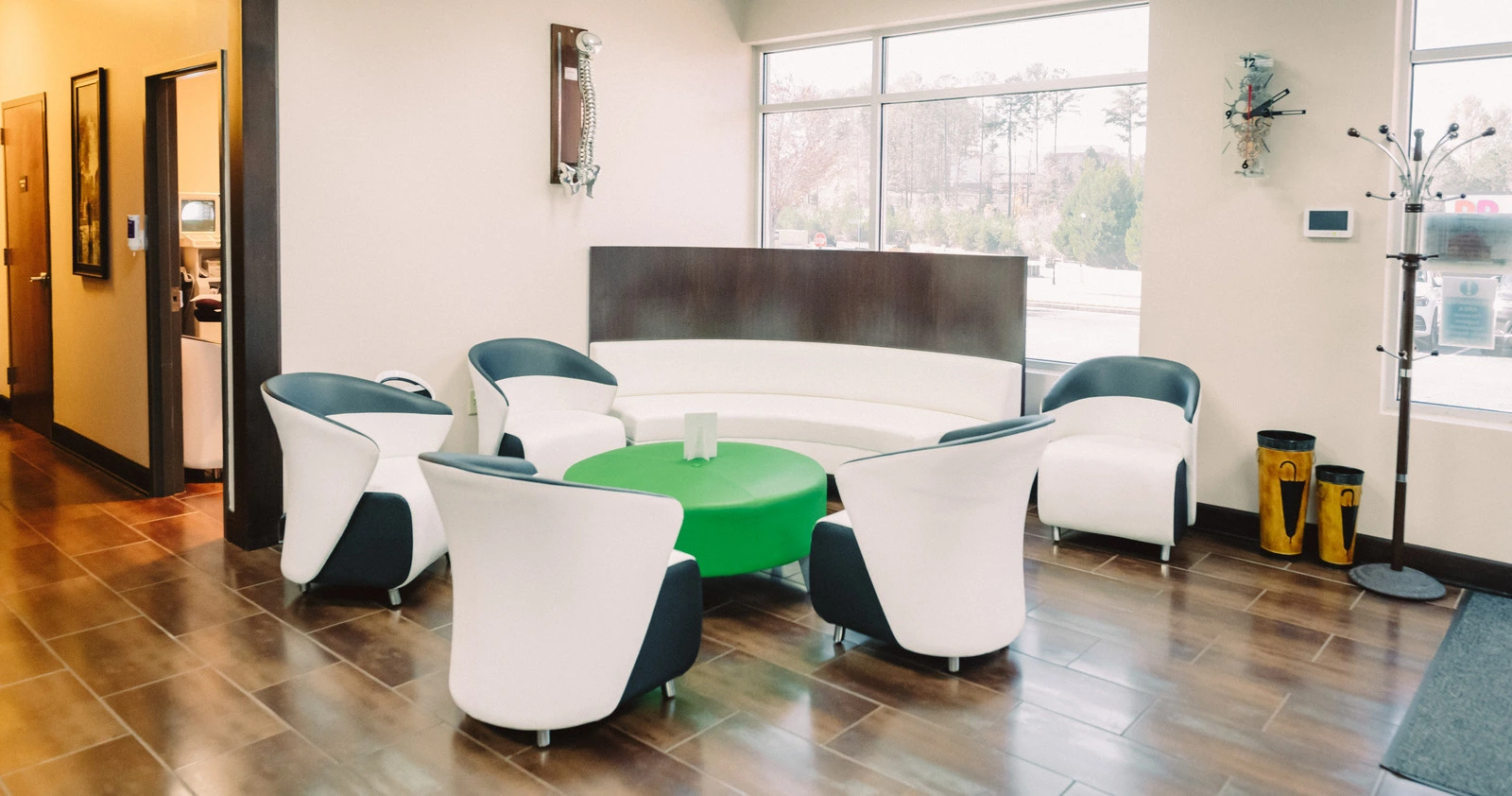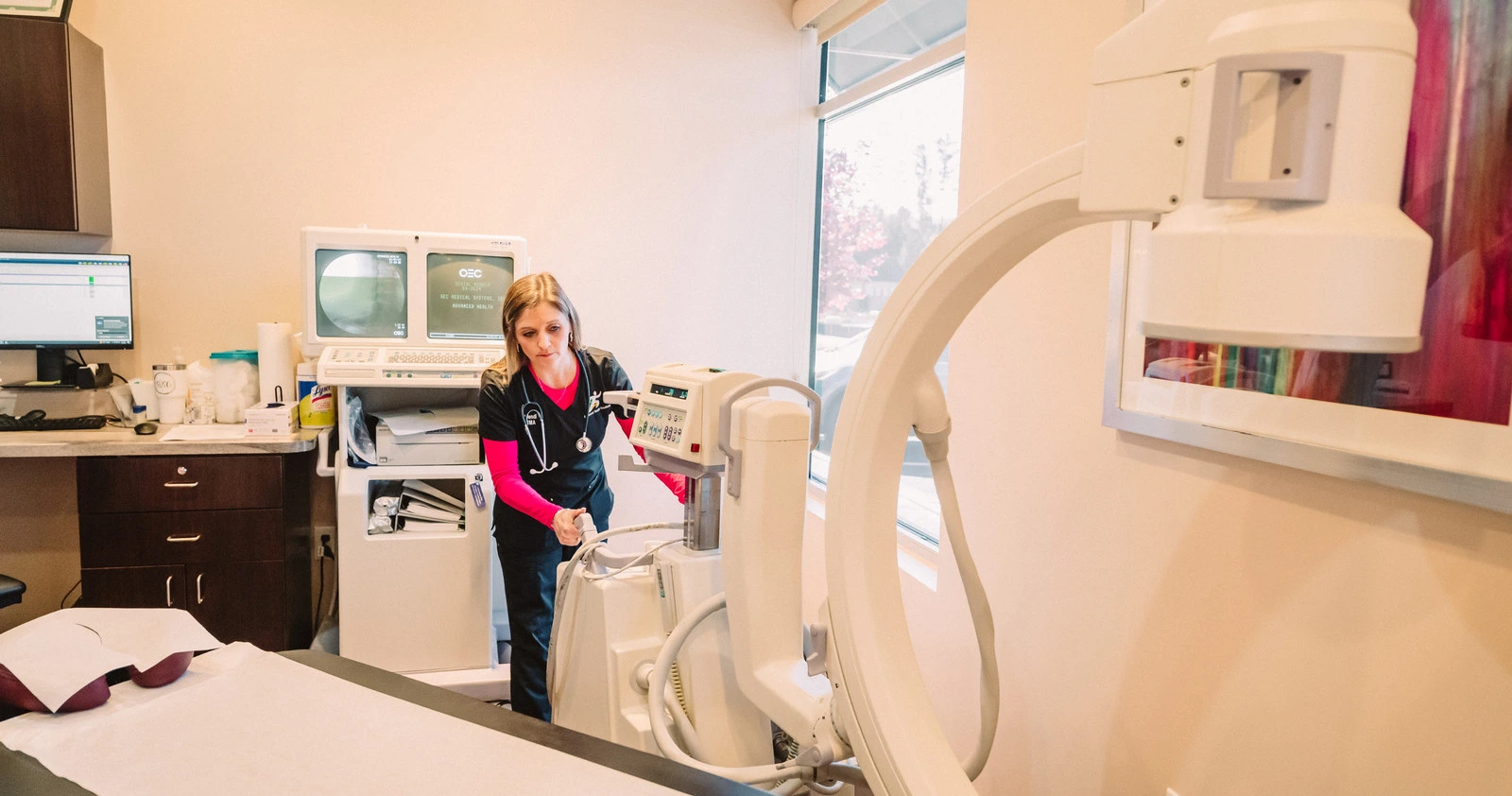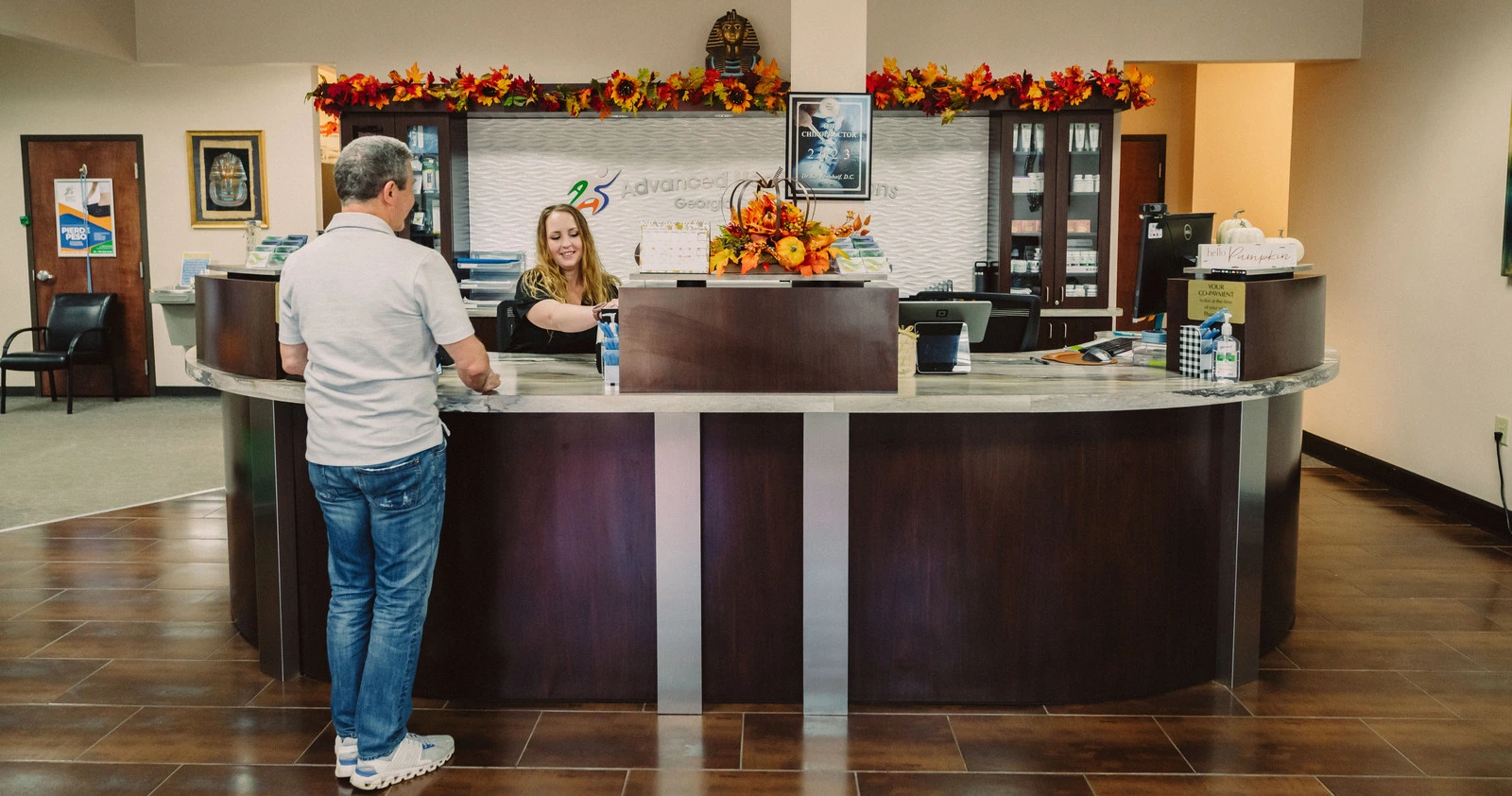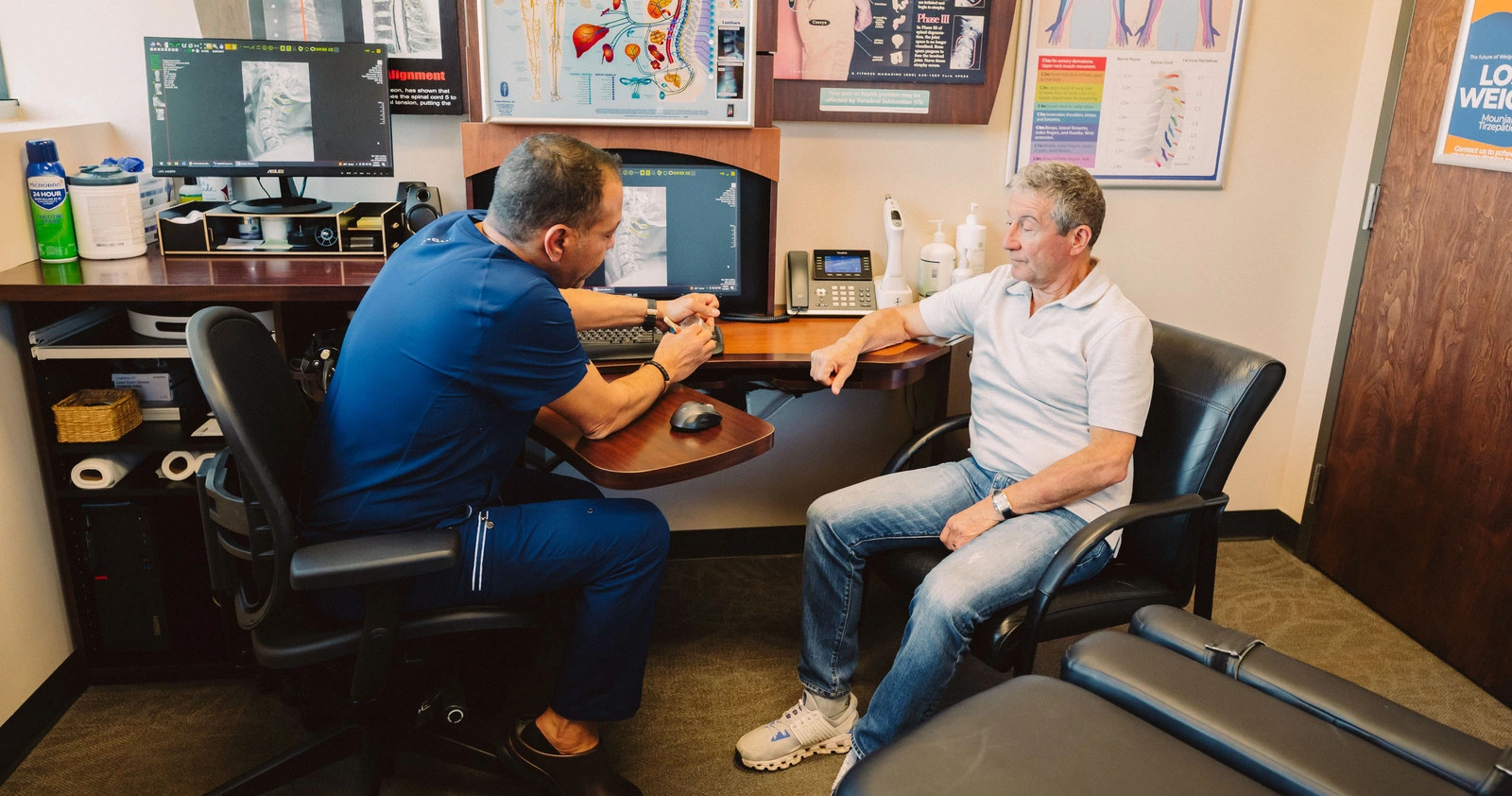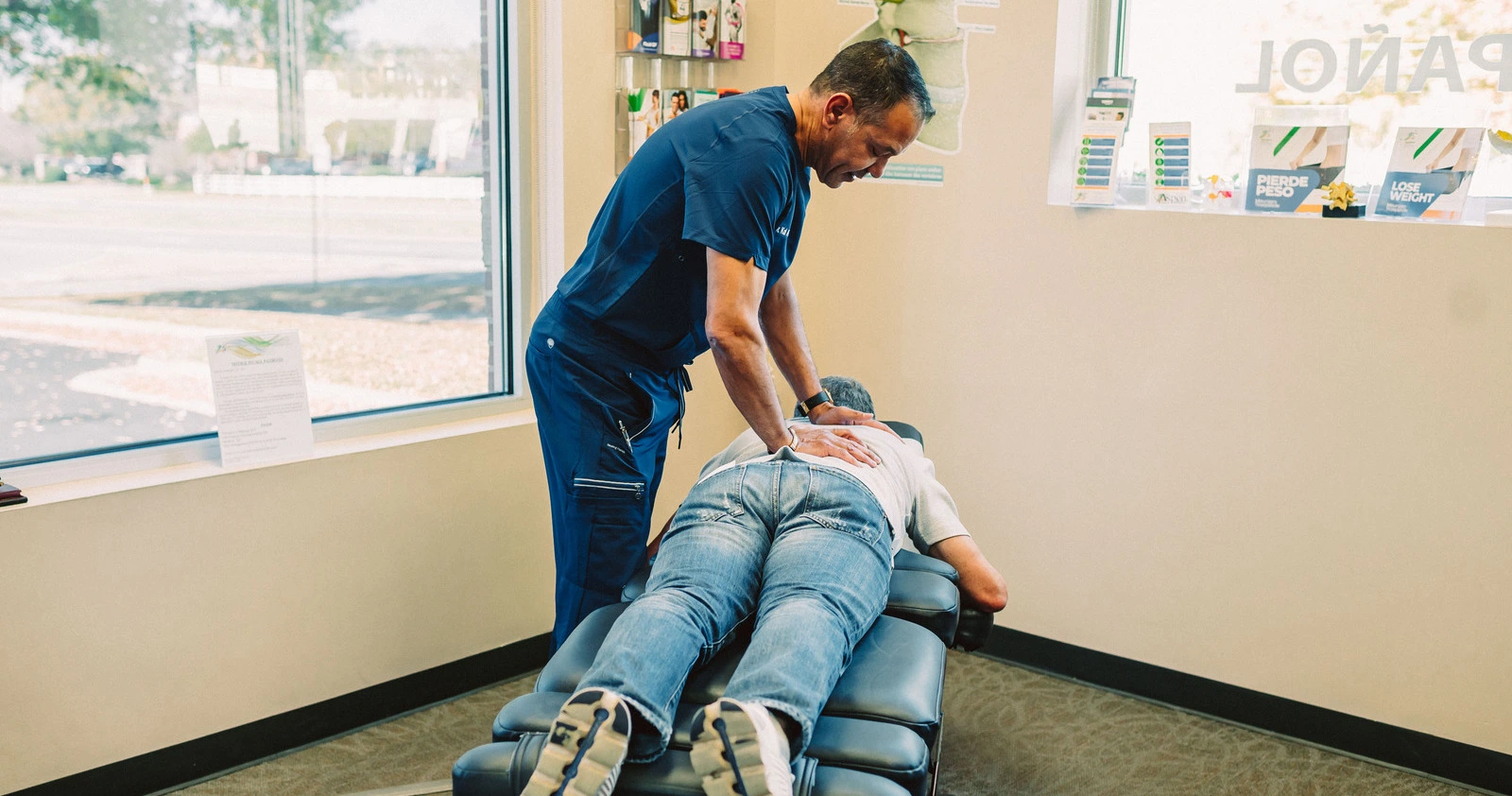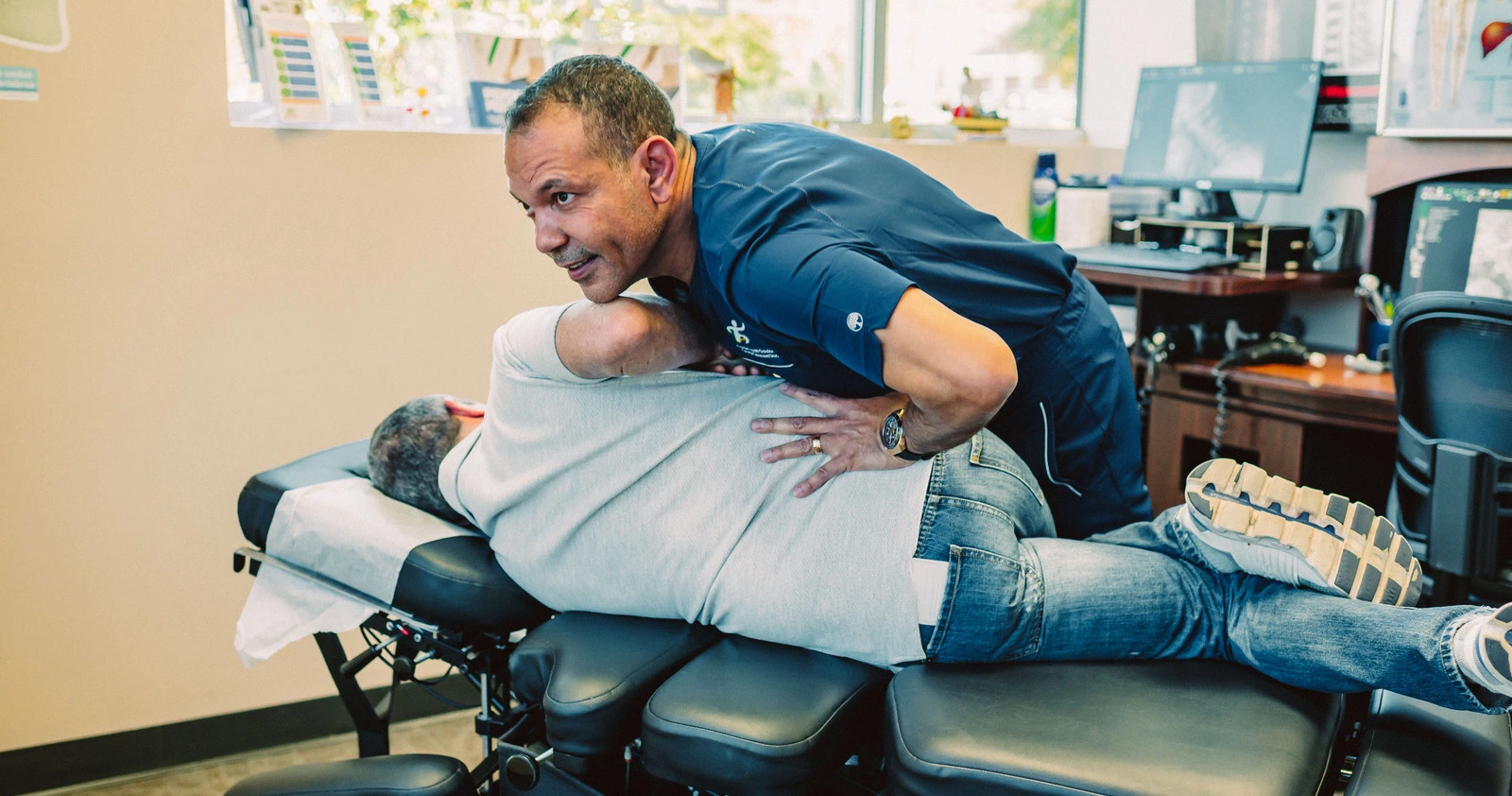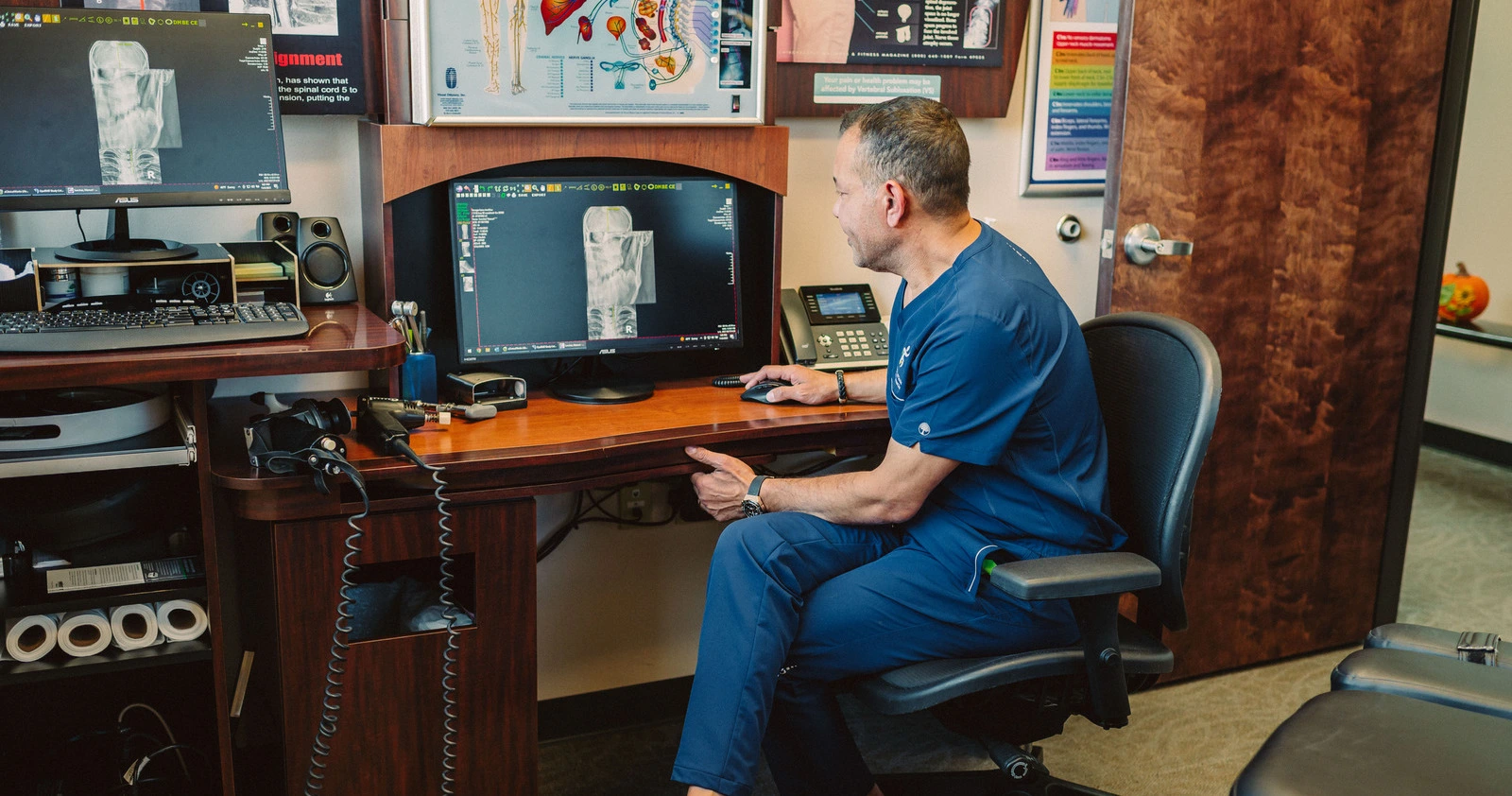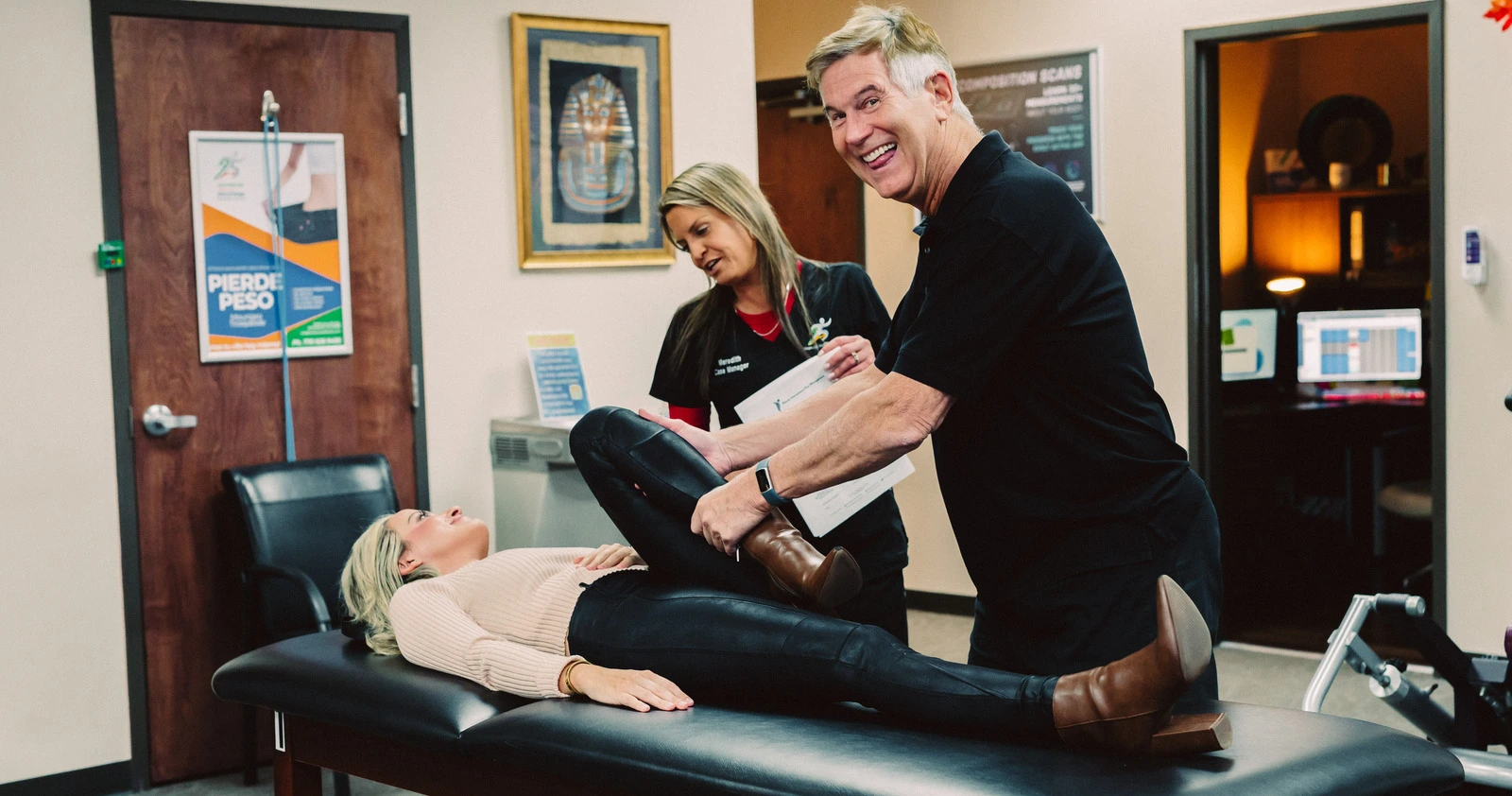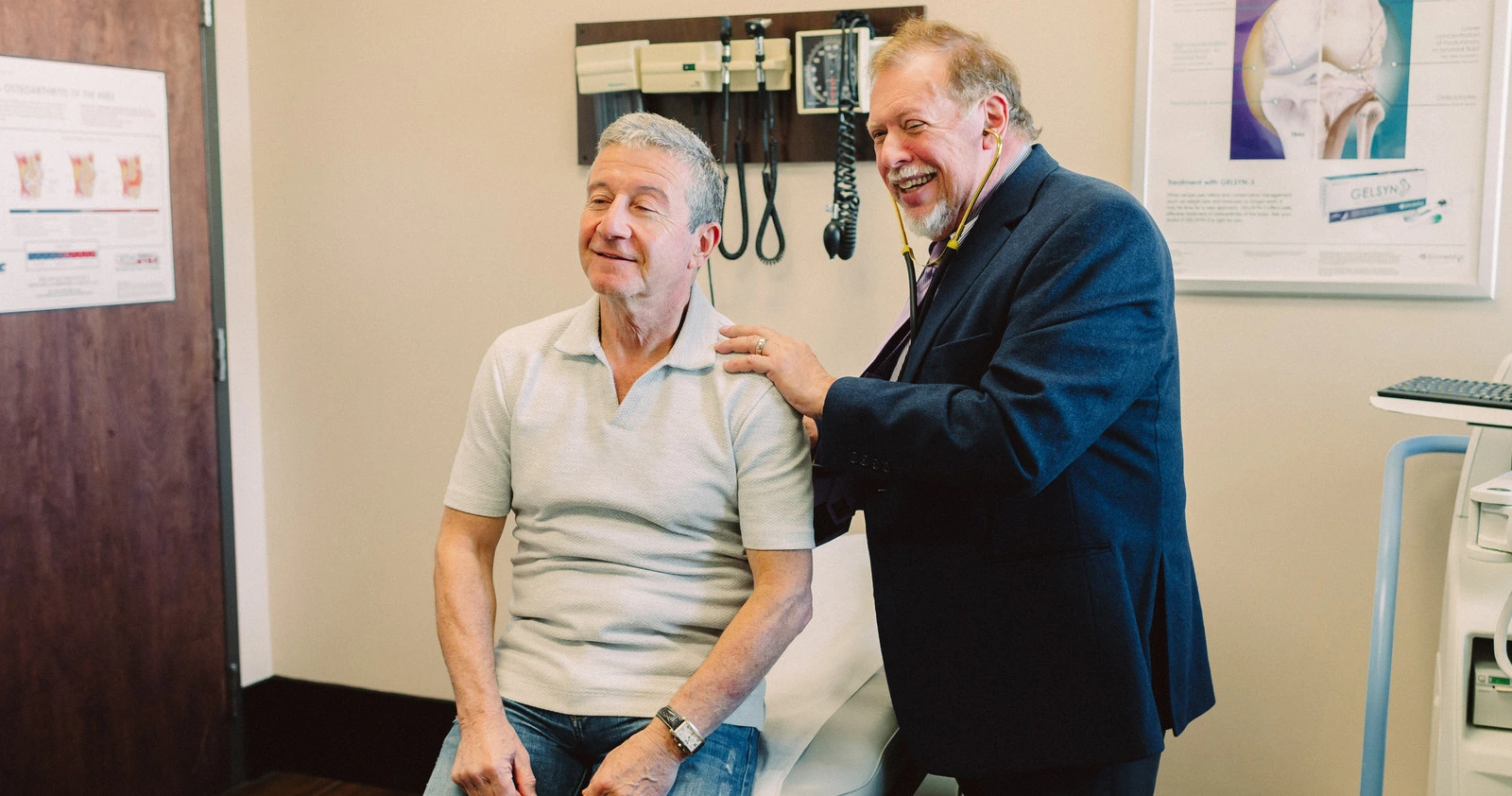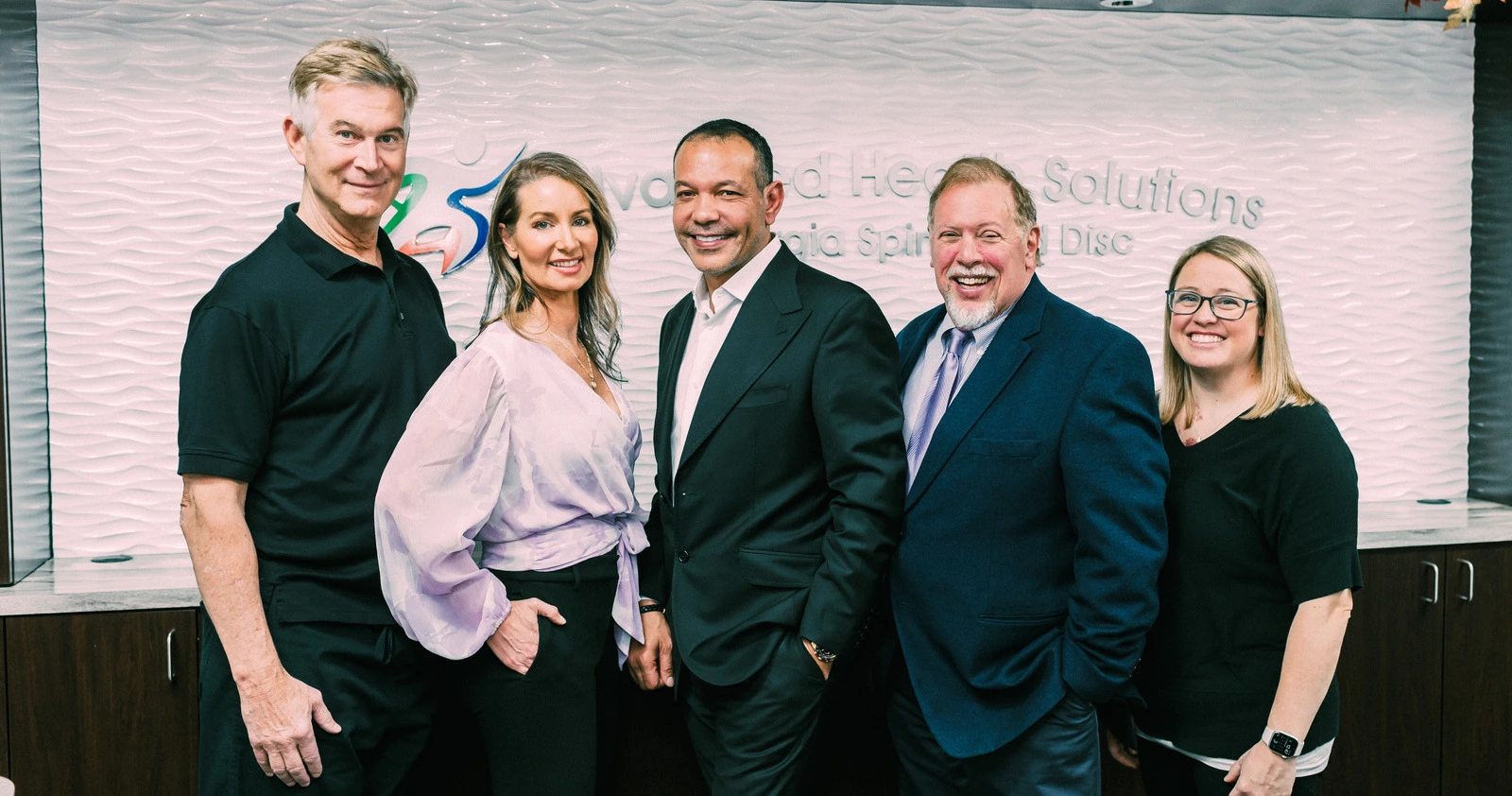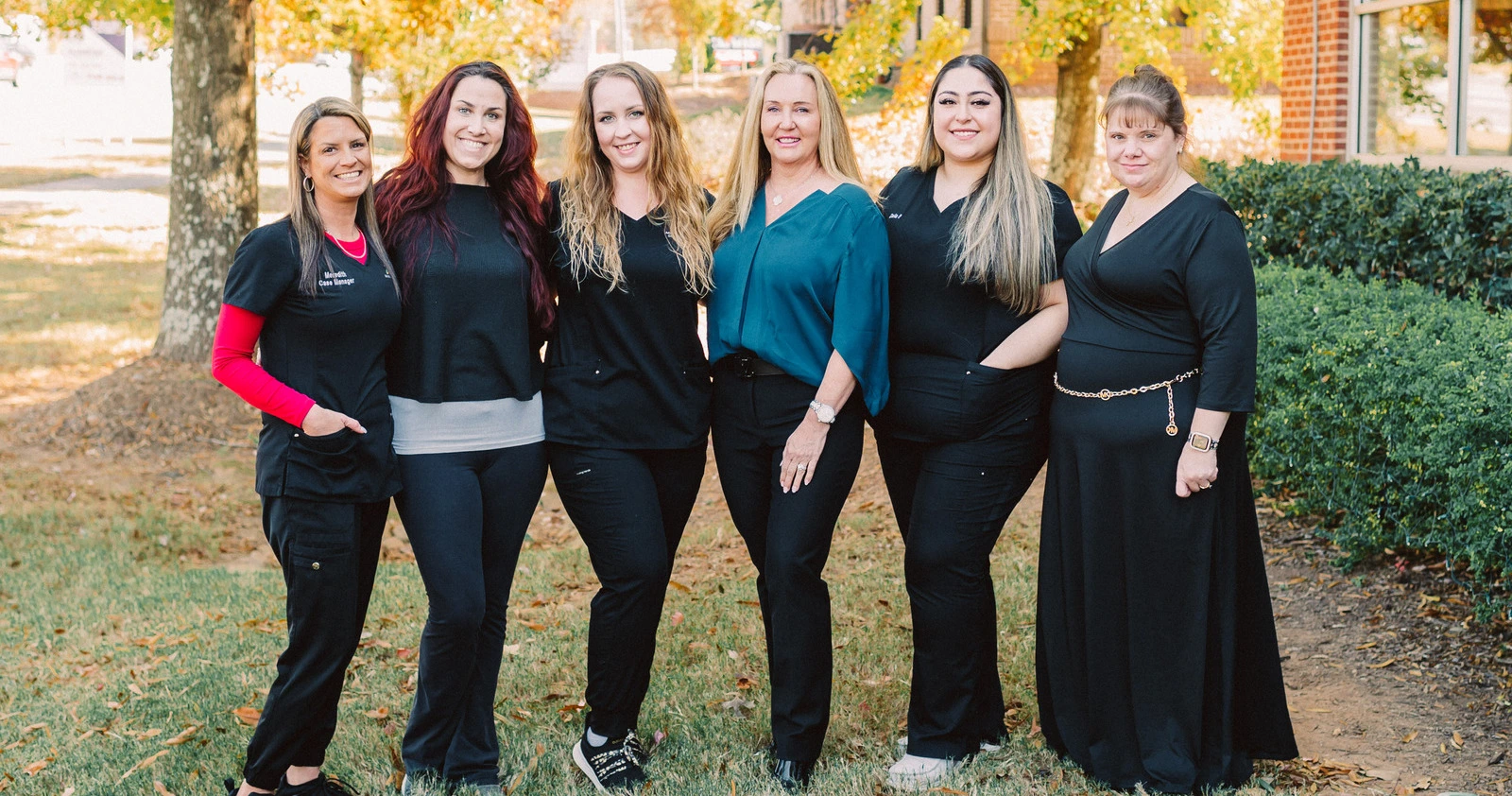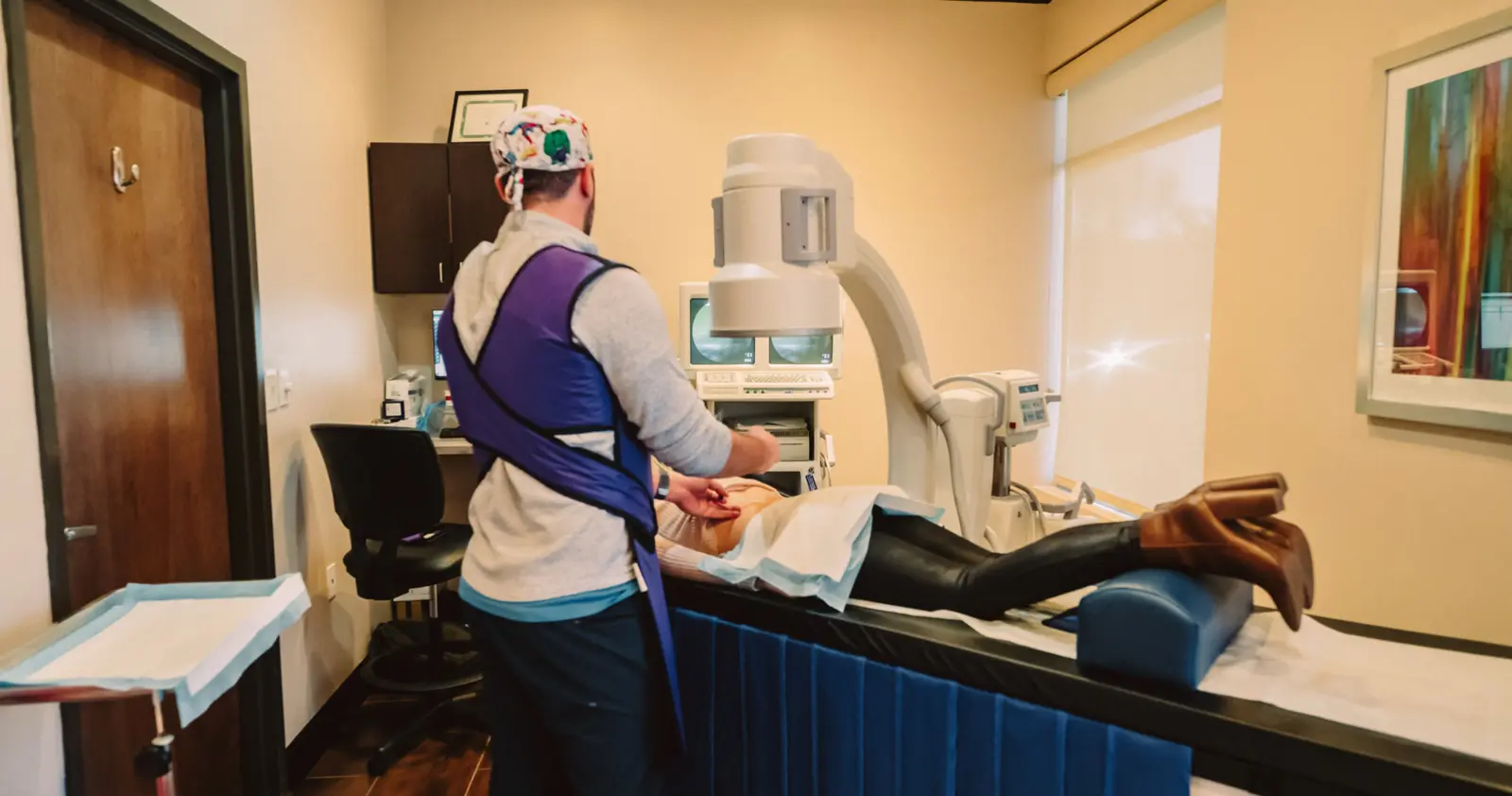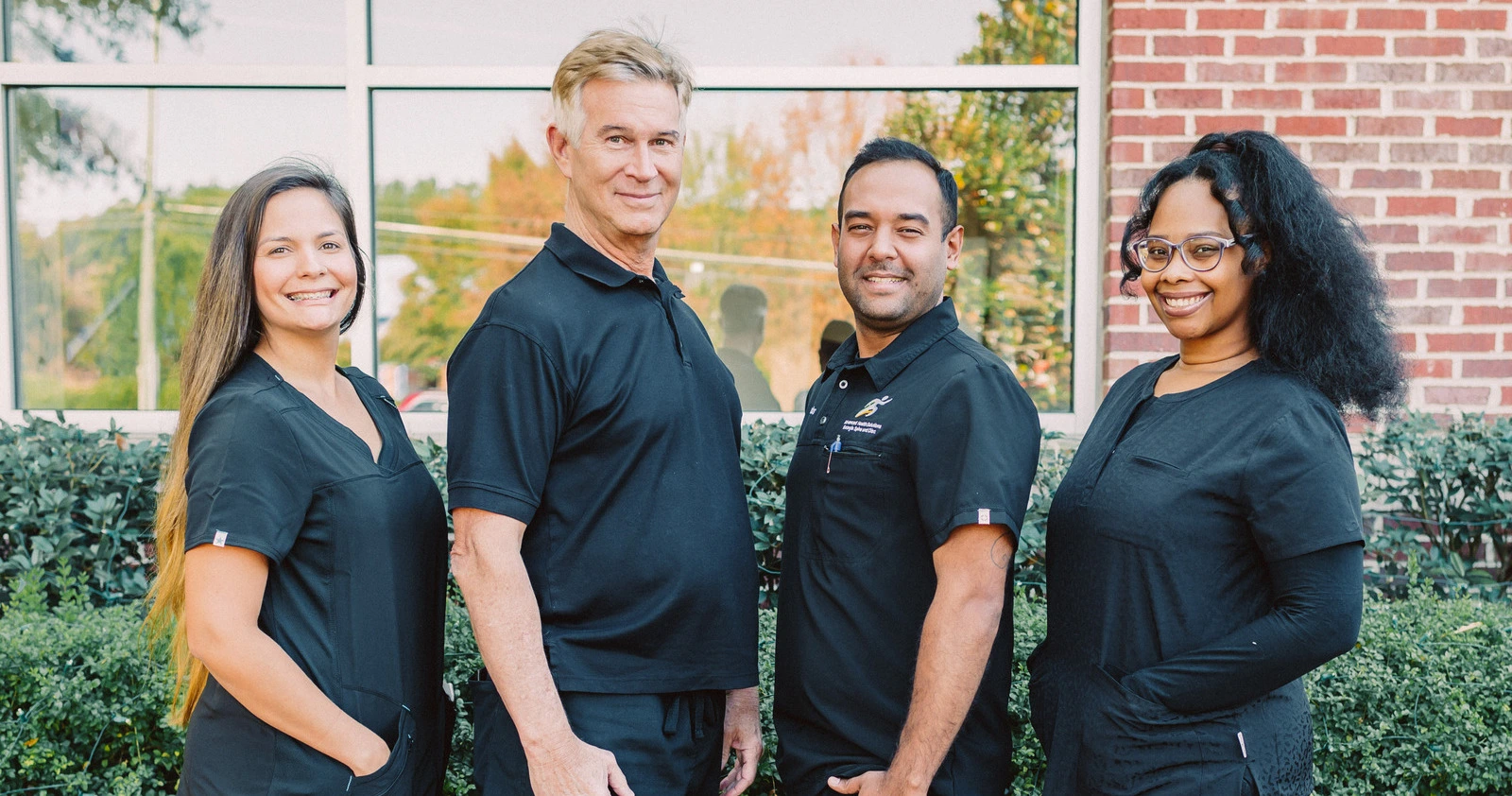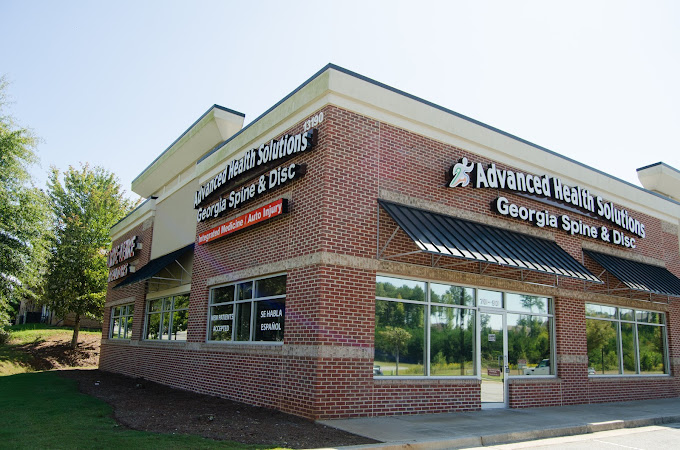What Causes Back Pain
Woodstock Chiropractor Dr. Kal explains. Back pain can be caused by many different diseases and conditions. Some of these conditions can be very serious but fortunately they are for the most part uncommon. These serious conditions include; cancer, tumors, neoplasm, inflammatory arthritis and infection. Several common conditions that can cause back pain are listed below.

Causes of Back Pain
Fractures and Dislocations
Fractures and dislocations can occur anywhere in the body. The vertebral bodies which help support the weight of the upper body can break resulting in a compression fracture. These types of fractures can be very painful and even disabling.
back to top>>>
It is important for the physician to determine the nature of these fractures. Some fractures can be caused by dangerous or serious conditions such as cancers, malignancies, or advanced osteoporosis. These are called pathological fractures. Other types of fractures may occur through traumatic events.
A dislocation is a term used to describe a condition where a joint has been disrupted and has separated to the point where the two adjacent bones are no longer aligned or touching. When a joint is dislocated the spine becomes unstable and is unable to protect the spinal cord or nerves.
back to top>>>
Degenerative Disc Disease
Degenerative Disc Disease (DDD) is a natural condition of the body that causes deterioration of the intervertebral discs. This is a gradual process that may compromise the spine. Although DDD is relatively common, its effects are usually not severe enough to warrant significant medical intervention. The intervertebral disc is one structure prone to degenerative changes associated with aging. Long before Degenerative Disc Disease can be seen radiographically, biochemical and histologic (structural) changes occur. Over time the collagen (protein) structure of the annulus fibrosis weakens and may become structurally unstable. Additionally, water and proteoglycans(PG) content decreases. PGs are molecules that attract water. These changes are linked and may lead to the disc’s inability to handle mechanical stress.
back to top>>>
Herniated Disc
Herniation of the nucleus pulposus (HNP) occurs when the nucleus (gel-like substance) breaks through the annulus fibrosis (tire-like structure) of an intervertebral disc (spinal shock absorber). Injury to the disc may result in pain, numbness, tingling or loss of muscle strength. Disc injuries in the neck region may affect the arms or hands while disc injuries in the low back may affect the legs or feet. People between the ages of 30 and 50 appear to be vulnerable because the elasticity of the disc and water content of the nucleus decreases with age.
back to top>>>
Facet Syndrome
Facet syndrome is a common spinal disorder affecting the posterior joints that results in pain, stiffness and inflammation. Increased stress at the facets results in stretching of the ligamentous capsule, deterioration of the smooth cartilaginous surfaces and increased friction at the joint. In facet syndrome, the symptoms of pain, discomfort and weakness frequently localize to the spine, nonetheless a small percentage may be felt in the extremities or other body areas.
back to top>>>
Foraminal Stenosis
The spinal nerves pass through openings on the side of the spine called intervertebral foramen. Foraminal stenosis occurs when these openings are smaller than normal. This condition can be the result of injury, degenerative change or congenital anomaly. The smaller opening may result in compression of the nerve. This irritation often causes symptoms of numbness, weakness, burning or tingling in the involved extremity. Long standing or severe stenosis may result in a functional loss.
back to top>>>
Spinal Stenosis
Spinal stenosis is a condition where the size of the spinal canal is reduced. This may lead to compression of the spinal cord. Symptoms often include pain, numbness, tingling and weakness. Severe cases may actually cause loss of function and may even lead to disability. Spinal stenosis is more common in patients over fifty years of age. Many factors can cause stenosis including injury and degenerative change.
back to top>>>
Fibromyalgia
Fibromyalgia is a chronic disorder associated with widespread soft tissue pain, tenderness and fatigue. A person with fibromyalgia will experience pain when up to 18 specific areas called tender points are pressed. Pushing carefully on these specific points during an examination causes discomfort or pain. The pain of fibromyalgia is more than normal muscle aches common after physical exertion. Fibromyalgia often can be severe enough to disrupt a person’s daily work and activities. The cause of fibromyalgia is not known.
back to top>>>
Osteoporosis
Osteoporosis is commonly called the “fragile bone disease.” It is due to loss of bone density caused by a deficiency in such bone-building nutrients as calcium, vitamin D and other vitamins and minerals. The most common complication of osteoporosis is compression fracture. In people with advanced osteoporosis, compression fractures can occur as the result of simple daily activities such as bending, carrying heavy loads, or a minor fall.
back to top>>>
Osteoarthritis (DJD)
Osteoarthritis, also called degenerative joint disease (DJD), is the most common type of arthritis. OA can occur in almost any joint of the body but most commonly occurs in the fingers, hips, knees and spine. Over time changes occur within the smooth cartilaginous surfaces of the joint. These changes lead to a loss of elasticity and the cartilage becomes stiff or brittle making it susceptible to injury. This will lead to stiffness, pain and crepitation at the joint. Advanced cases may actually result in significant damage to the bone itself.
back to top>>>
Spondylolisthesis
Spondylolisthesis occurs when one vertebrae slips forward (translation) in relation to the adjacent vertebrae. Stability is inversely proportional to the degree of translation. The ability of a vertebrae to “slip” in relation to its neighbor can be caused by many factors, including facet or disc degeneration, trauma or a defect in a region of the vertebrae called the pars interarticularis. Severe cases may result in spinal cord or nerve compression and can require surgical intervention.
back to top>>>
Sprain/Strain
Sprains and strains are two of the most common causes of back pain. They can be caused by trauma, overuse, lack of conditioning, and improper body mechanics. The term sprain is used when this injury occurs in a ligament. Conversely, strain is used when the affected tissue is muscle or tendon. Typically, patients will complain of increased pain with activity and relief at rest. Treatment will often include a period of rest followed by a therapeutic exercise program to increase flexibility and strength.
Compression Fracture
Compression fractures can occur in any vertebra (spinal bones) and is described as a collapse of the vertebra.
Symptoms – The first symptom of a compression fracture may be sudden and severe back pain that remains in one local area. Some persons may experience numbness/tingling, or weakness in the arms or legs if the spinal cord or nerves leading away from the fracture have been compressed. If multiple fractures occur in an area of the back, the person will develop a forward hump-like curvature to the back.
Causes – There are many possible causes of compression fractures. Car accidents, falls, and weakening of the bone due to pathology (i.e. cancer), or Osteoporosis are common.
Diagnosis – The diagnosis is based on observation of the aforementioned symptoms and x-rays of the spine. Additional tests (i.e. bone scan, blood tests) may be needed to diagnose the actual cause of the compression fracture.
back to top>>>
Cancer
If you have severe back pain, it is natural to wonder whether or not the pain might be a sign of cancer. Tumors in the spinal column may cause pain from expansion of the bone or from weakening the bone, which in turn can result in spinal fractures, compression (pinching) of the nerves, or spinal instability.
back to top>>>
Discitis
Discitis, or disc space infection, is an inflammatory lesion of the intervertebral disc that occurs in adults but more commonly in children. Its cause has been the subject of debate, although most authors believe it to be infectious. The infection probably begins in one of the continguous end plates, and the disc is infected secondarily. Severe back pain that begins insidiously is characteristic of the disease.
Discitis in Children
Although most children will continue to walk in spite of the pain, young children may refuse to ambulate. The characteristic finding is extension of the spine and the child’s complete refusal to flex the spine. Children with discitis usually are not systemically ill. They rarely have an elevated temperature and their white blood cell count is frequently normal. However the erythrocyte sedimentation rate is usually increased. Lateral radiographs of the spine usually will reveal disc space narrowing with erosion of the vertebral end plates of the contiguous vertebrae. bone scanning may be helpful in localizing a lesion that is difficult to diagnose clinically. Some bone scans are falsely negative, so the diagnosis of disc space infection should not be excluded simply because the bone scan is normal. Magnetic resonance imaging (MRI) seems to be helpful in identifying a disc space infection.
back to top>>>
Kyphosis
Kyphosis is the abnormal forward bending of the spine. In kyphosis, the curve of the spine is abnormal, forming a hump.
What is going on in the body?
The normal spine rounds slightly in the chest area, with arching in the lower back and neck regions. Excessive kyphosis can occur mainly in the chest area of the spine, causing the roundness of the back to appear exaggerated.
What are the signs and symptoms of the condition?
Symptoms are usually minimal, unless the deformity is severe. In that case, the back may ache or, rarely, nerve problems may arise. The hamstrings, or muscles at the back of the thigh, may also be tight.
What are the causes and risks of the condition?
Kyphosis is generally caused by an abnormal posture. Other possible causes include: · a significant fracture of the vertebra, which can cause the back to angle forward · spinal surgery · Scheuermann’s disease, which results in wedging of the vertebrae. This disease is usually seen in teenage boys, and its cause is unknown. Pott’s disease, which refers to kyphosis due to collapse of the vertebra when tuberculosis infects the spine · osteoporosis in elderly women, which causes a type of kyphosis known as dowager’s hump · spinal tumors, or surgery to remove them · nerve disorders
back to top>>>
Trauma
Trauma to the spine refers to injury that has occurred to bony elements, soft tissues and/or neurological structures. The two things that surgeons are most concerned about, in the case of spinal trauma, are instability of the vertebral column and actual or potential neurological injury.
Stability to the spinal column can be compromised when bony elements are injured or there is disruption to soft tissues such as ligaments. Instability causes the back to become unable to successfully carry normal loads, which can lead to permanent deformity, severe pain and in some cases catastrophic neurological injuries. Most often the instability comes from a fracture in one of the bony parts of the vertebra, specifically the vertebral body, the lamina or the pedicles.
In the case of trauma, dislocations and fractures happen simultaneously and can result in a very unstable spinal column. They can occur in any region of the spine and are associated with a degree of neurological injury. A surgeon needs to restore the mechanical stability of the spine to try and prevent more neurologic injury, progressive deformity or prolonged incapacitation pain.
back to top>>>
Back pain in pregnancy
Introduction to back pain during pregnancy
For pregnant women, back pain during pregnancy is not a trivial matter. If not addressed, it can have a negative impact on your daily lifestyle, cause missed time from work, and make your delivery more difficult. Back pain in the course of your pregnancy can also create problems that will continue for an extended period after delivery.
Addressing back pain during pregnancy
While it is fairly common, back pain during pregnancy should definitely not be accepted as just part of the process. To help make your pregnancy as pleasant as possible and facilitate an easier delivery, back pain should be always be addressed as quickly as possible and managed throughout your pregnancy.
Low back pain of long duration (several weeks or months) during pregnancy is a predictor for post partum back pain (pain after birth). For this reason, pregnant women are encouraged to seek appropriate treatment for back pain during pregnancy.
Likewise, any post partum pain that lasts longer than six to eight weeks should be treated in order to avoid chronic or recurring back problems.
back to top>>>
Radiculopathy
lumbar radiculopathy, which refers to pain in the lower extremities in a dermatomal pattern. A dermatome is a specific area in the lower extremity innervated by a specific lumbar nerve. This pain is caused by compression of the roots of the spinal nerves in the lumbar region of the spine. Diagnosing leg and back pain begins with a detailed patient history and examination.
back to top>>>
Scoliosis
Scoliosis is defined as a side-to-side deviation from the normal frontal axis of the body. Although traditional, this definition is limited since the deformity occurs in varying degrees in all three planes: back-front; side-to-side; top-to-bottom. Scoliosis is a descriptive term and not a diagnosis. As such, a search is made for the cause. In more than 80% of the cases, a specific cause is not found and such cases are termed idiopathic, i.e., of undetermined cause. This is particularly so among the type of scoliosis seen in adolescent girls. Conditions known to cause spinal deformity are congenital spinal column abnormalities, neurological disorders, genetic conditions and a multitude of other causes. Scoliosis does not come from carrying heavy things, athletic involvement, sleeping/standing postures, or minor lower limb length inequality.
In managing AIS, the judgment of the surgeon and the participation of informed patients and families are as important in determining treatment outcome as surgical techniques. Decision-making in the management of AIS remains complex despite the availability of data on natural history, prognosis of different curve patterns, brace treatment factors, and surgical innovations.
The management of AIS includes several steps and treatment options:
· screening and early detection of deformity,
· observation of changes in deformity over time with informed judgment regarding prognosis, orthotic and non-operative interventions,
· surgical planning and operating.
back to top>>>
Sciatica
This is a condition which causes pain down the back of one or both thighs. Inflammation of the sciatic nerve (which is the largest nerve in the body-about the diameter of your little finger) can be either constant or intermittent. Success in solving this problem is directly correlated to the diagnosis. Sciatica can be caused by a pinched nerve as it exits the low back spine or it can be caused by prostatic cancer. Odds are usually that the cause is some structural imbalance, but there are so many potential causes, some serious and some benign, it is better to at least know that there may be a grave cause to the symptoms.
This doesn’t mean that you shouldn’t immediately incorporate a strategy to eliminate any structural imbalances. In most cases, this will resolve the problem. If the problem doesn’t respond to these basic efforts, then professional assistance may be needed. The first effort in relieving sciatic symptoms should be to review Hip Pain.
Trigger points can accumulate in the piriformis muscle forcing a contraction and strangulation of the sciatic nerve. The tennis ball exercise should be incorporated to help to relax the piriformis muscle. Stretching may be beneficial, but that is more of a “try an see” exercise.
If there are no improvements with this approach, refer to Low Back Pain to better understand the relationship between the sciatic nerve and the low back spine. Seeking help from a chiropractor or orthopedist may be indicated if the solution can’t be found at home.
back to top>>>
Lordosis
Lordosis is a disorder defined by an excessive inward curve of the spine. It differs from the spine’s normal curves at the cervical, thoracic, and lumbar regions, which are, to a degree, either kyphotic or lordotic. The spine’s natural curves position the head over the pelvis and work as shock absorbers to distribute mechanical stress during movement.
Lordosis can be found in all age groups. It primarily affects the lumbar spine, but does occur in the neck (cervical). When found in the lumbar spine, the patient may appear swayback, the buttocks more prominent, and in general an exaggerated posture. A lumbar lordosis can be painful sometimes affecting movement.
Certain disease processes can adversely affect the structural integrity of the spine and contribute to lordosis. Some common causes include achondroplasia, discitis, kyphosis, obesity, osteoporosis, and spondylolisthesis.
back to top>>>
Ligamentous Hypertrophy
Ligaments run up and down the spinal column. Hypertrophy of the ligaments in the vertebral canal (the posterior longitudinal ligament — runs up and down along the back side of the vertebral bodies, and the ligamentum flavum — runs up and down under the posterior bone ring made up of the lamina and spinous process) can increase their mass enough that they narrow the canal (stenosis) sometimes to the point that the spinal cord and/or nerve roots running through the canal are compressed. When the posterior longitudinal ligament in front and ligamentum flavum behind the spinal cord hypertrophy the cord is almost “circumferentially” surrounded and compressed).
Hypertrophy of the ligamentum flavum laterally near the facet joint can also contribute to foraminal narrowing (stenosis) with potential nerve compression (pinching).
back to top>>>
Obesity
According to the American Obesity Association (AOA) 64.5 percent of adult Americans (about 127 million) are categorized as being overweight or obese (1). The unfortunate truth is that obesity is becoming a global epidemic affecting adults and children.
Connection to Back Pain
Most people know that obesity contributes to the development of coronary heart disease, diabetes, high blood pressure, and colon cancer. However, did you know that obesity is a contributing factor to back pain? It is true. Being overweight or obese can significantly contribute to symptoms associated with osteoporosis, osteoarthritis (OA), rheumatoid arthritis (RA), degenerative disc disease (DDD), spinal stenosis, and spondylolisthesis.
The spine is designed to carry the body’s weight and distribute the loads encountered during rest and activity. When excess weight is carried, the spine is forced to assimilate the burden, which may lead to structural compromise and damage (e.g. injury, sciatica).
One region of the spine that is most vulnerable to the effects of obesity is the low back; the lumbar spine. Lack of exercise and bodily conditioning leads to poor flexibility and weak muscles in the back, pelvis, and thighs. This can increase the curve of the lower back causing the pelvis to tilt too far forward. Further, this is detrimental to proper posture and as posture weakens, other regions of the spine (neck) may become painful.
You may try to dismiss the cause of some of these spinal disorders to the process of normal aging. It is true that with age body tissues can cause changes to spinal anatomy (2). However, if you are overweight or obese, chances are you have, or will have, back pain.
back to top>>>
Medical Evaluation and Diagnostic Testing procedures should be performed prior to beginning any treatment in order to determine the treatment process that will be most effective. The following describes some of the evaluation testing procedures that can be performed to help confirm the cause of back pain.
The causes of back pain can be very complex, and there are many structures in the lower back that can cause pain. The following are used to test for the cause pain:
A Bone scan in Nuclear Medicine is a procedure which involves two steps:The patient is asked to arrive 3 hours before their actual scan to receive an injection of a small amount of radioactive tracer that is “tagged” to a calcium like material. Usually the tracer is injected in a vein in the arm of the patient. In some instances, other sites of injection are used especially for those patients that had difficult veins to find. The “radiopharmaceutical” has no side effects and because of this, the patient can be released from the department for 3 hours to give the calcium time to circulate and be taken up by the bone. There are no dietary restrictions so the patient may eat before and after the injection.
After the three hours has elapsed, the patient returns to the Nuclear Medicine department for their scan. The patient is placed on a table a head to toe scan is performed by a “gamma camera”.

